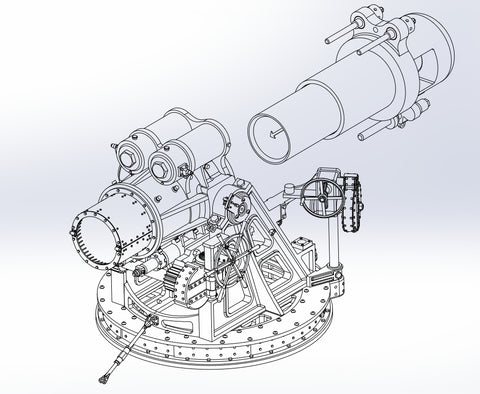
Instructions, 1:35 M11 siege howitzer model, 3D printed kit, Skoda M.11-Mörser
The 30.5 cm M.11 siege howitzer (also called the Škoda 305 mm howitzer or M.11-Mörser) with the types M.11, M.11/16 and M.16 was a gun of the fortress artillery of the Austro-Hungarian Army. It was used by the Czechoslovakian (as 30.5-cm moždíř vz. 11) and Yugoslavian armies in the interwar period and by the German Wehrmacht during World War II. This model is a M11 variant, developed by ModellbauRay studio.

The weapon was transported in three sections by a 100-horsepower 15 ton Austro-Daimler M 12 artillery tractor. It broke down into barrel, carriage and firing platform loads, each of which had its own trailer. It could be assembled and readied to fire in around 50 minutes. The mortar could fire two types of shell, a heavy armour-piercing shell with a delayed action fuse weighing 384 kg, and a lighter 287 kg shell fitted with an impact fuze. The light shell was capable of creating a crater 8 meters wide and 8 meters deep, as well as killing exposed infantry up to 400 m (440 yd) away. The weapon required a crew of 15–17, and could fire 10 to 12 rounds an hour. After firing, it automatically returned to the horizontal loading position.

A turret cupola from one of Antwerp's fortresses hit and split by a 30.5 cm shell during the Siege of Antwerp in 1914. This turret can be found in Heeresgeschichtliches Museum, Wien.





















































